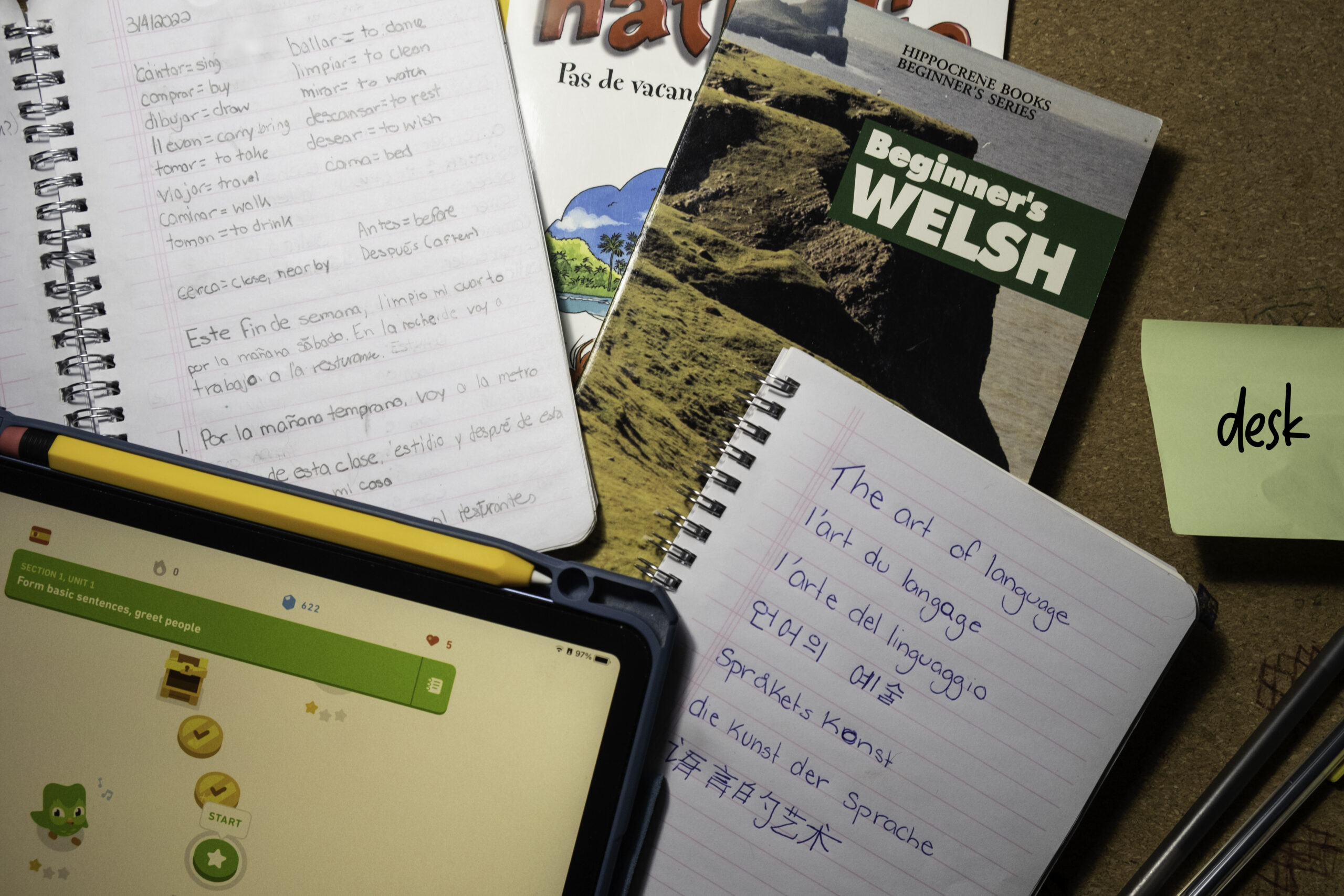By creating their own strategies, these learners unlocked their skills in speaking a new language naturally.
What was the last thing you learned on your own? What motivated you to do it? Not everyone learns in the same way, and not all techniques work for everyone. However, that is the magic: creating your own learning methods and understanding why you want to learn something is a great way to get to know yourself and it can greatly enrich your life, especially when it comes to learning a new language.
Jessica Dewling has been into Korean music and K-pop for a few years, which inspired her to learn more about Korea, its language and its history. She is planning a trip to Korea in October and feels that learning Korean in advance would not only be helpful, but more respectful to the people she meets as she explores the country. “A lot of the culture is ingrained in the language so I felt like it was important to get at least a basic understanding of it,” she said.
To learn Korean, Dewling decided to invest in her own methods, which are more inspiring and pleasurable to her. “I’m starting with the writing system, Hangul, which is notorious for being easy to grasp pretty fast and hopefully moving towards pronunciation and vocabulary,” she explained. “Right now, I’m using Duolingo as well as a workbook that was very popular on Amazon.” Jessica stressed that learning at her own pace using a variety of free resources is essential for her progress, once she is not being taught by an instructor.
Colt Sweetland is currently learning Brazilian Portuguese. For him, learning languages is the key to unlocking doors to cultural insights that you wouldn’t have access to if you weren’t able to hold conversations and make connections with people in their native language.
“My motivation came from a combination of friendly encouragement from friends I’ve made through both work and university and the fire inside to keep fulfilling an inner lifelong challenge of becoming more familiar with various cultures around the world,” he said.
For Colt, total immersion has always been the best learning method. “What’s helpful for me is setting all personal and leisure electronic devices into the language you want to learn to begin being exposed to it right away,” he said. “It can be intimidating at first, but you may find that you’ll become acquainted with it sooner.”
Colt started by learning the conversational basics in Brazilian Portuguese, such as all forms of greetings, numbers and proper nouns. To progress further, he invested in learning the five most common Brazilian Portuguese verbs in the present tense and then hand-writing all the conjugations ten times each. “Repetition is a key component of memorization, and for me, writing by hand helps ensure new words sink in more permanently,” he said.
To practice listening, Colt will switch the audio on films he is watching to the language he wants to learn, but will keep the subtitles in English. Eventually, once he is familiar enough, he will change the subtitles to the new language as well. “I also personally prefer to seek out local content online such as Brazilian news and TV series if possible, along with finding some children’s books or comics that can make it more fun! I believe there’s so much that can be learned through one’s own means during spare time and for free if the willpower is there to keep going,” Colt said.
The pursuit of language mastery is not just about acquiring linguistic skills; it’s a profound voyage of self-discovery, cultural connection, and the fulfillment of lifelong challenges. In the realm of language learning, the magic lies in the unique methods we craft for ourselves, fostering a deeper understanding of not just the language but also the rich tapestry of our own identities.
